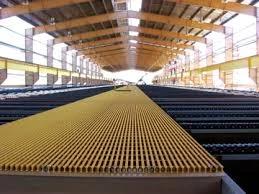
-
 Afrikaans
Afrikaans -
 Albanian
Albanian -
 Amharic
Amharic -
 Arabic
Arabic -
 Armenian
Armenian -
 Azerbaijani
Azerbaijani -
 Basque
Basque -
 Belarusian
Belarusian -
 Bengali
Bengali -
 Bosnian
Bosnian -
 Bulgarian
Bulgarian -
 Catalan
Catalan -
 Cebuano
Cebuano -
 China
China -
 China (Taiwan)
China (Taiwan) -
 Corsican
Corsican -
 Croatian
Croatian -
 Czech
Czech -
 Danish
Danish -
 Dutch
Dutch -
 English
English -
 Esperanto
Esperanto -
 Estonian
Estonian -
 Finnish
Finnish -
 French
French -
 Frisian
Frisian -
 Galician
Galician -
 Georgian
Georgian -
 German
German -
 Greek
Greek -
 Gujarati
Gujarati -
 Haitian Creole
Haitian Creole -
 hausa
hausa -
 hawaiian
hawaiian -
 Hebrew
Hebrew -
 Hindi
Hindi -
 Miao
Miao -
 Hungarian
Hungarian -
 Icelandic
Icelandic -
 igbo
igbo -
 Indonesian
Indonesian -
 irish
irish -
 Italian
Italian -
 Japanese
Japanese -
 Javanese
Javanese -
 Kannada
Kannada -
 kazakh
kazakh -
 Khmer
Khmer -
 Rwandese
Rwandese -
 Korean
Korean -
 Kurdish
Kurdish -
 Kyrgyz
Kyrgyz -
 Lao
Lao -
 Latin
Latin -
 Latvian
Latvian -
 Lithuanian
Lithuanian -
 Luxembourgish
Luxembourgish -
 Macedonian
Macedonian -
 Malgashi
Malgashi -
 Malay
Malay -
 Malayalam
Malayalam -
 Maltese
Maltese -
 Maori
Maori -
 Marathi
Marathi -
 Mongolian
Mongolian -
 Myanmar
Myanmar -
 Nepali
Nepali -
 Norwegian
Norwegian -
 Norwegian
Norwegian -
 Occitan
Occitan -
 Pashto
Pashto -
 Persian
Persian -
 Polish
Polish -
 Portuguese
Portuguese -
 Punjabi
Punjabi -
 Romanian
Romanian -
 Russian
Russian -
 Samoan
Samoan -
 Scottish Gaelic
Scottish Gaelic -
 Serbian
Serbian -
 Sesotho
Sesotho -
 Shona
Shona -
 Sindhi
Sindhi -
 Sinhala
Sinhala -
 Slovak
Slovak -
 Slovenian
Slovenian -
 Somali
Somali -
 Spanish
Spanish -
 Sundanese
Sundanese -
 Swahili
Swahili -
 Swedish
Swedish -
 Tagalog
Tagalog -
 Tajik
Tajik -
 Tamil
Tamil -
 Tatar
Tatar -
 Telugu
Telugu -
 Thai
Thai -
 Turkish
Turkish -
 Turkmen
Turkmen -
 Ukrainian
Ukrainian -
 Urdu
Urdu -
 Uighur
Uighur -
 Uzbek
Uzbek -
 Vietnamese
Vietnamese -
 Welsh
Welsh -
 Bantu
Bantu -
 Yiddish
Yiddish -
 Yoruba
Yoruba -
 Zulu
Zulu
Exploring the Benefits and Applications of Fiberglass Duct in HVAC Systems
The Advantages of Fiberglass Ducts in HVAC Systems
In the realm of heating, ventilation, and air conditioning (HVAC), the materials used for ductwork have a significant impact on system efficiency, air quality, and overall performance. Among the various materials available, fiberglass ducts are emerging as a popular choice for both residential and commercial applications. These ducts offer numerous advantages that address common challenges faced by HVAC systems.
Lightweight and Easy to Install
One of the most notable benefits of fiberglass ducts is their lightweight nature. Fiberglass ducts are significantly lighter than traditional metal ducts, making them easier to handle and install. This attribute reduces labor costs and installation time, an essential factor for contractors and builders who aim to complete projects efficiently. The ease of installation also allows for more versatile designs, enabling the ducts to fit into various spaces and configurations without requiring extensive modifications to the building structure.
Superior Insulation Properties
Fiberglass ducts possess excellent insulation characteristics. The insulation material is integrated into the duct itself, minimizing the risk of heat loss or gain as air travels through the system. This inherent insulation helps maintain consistent temperatures, leading to improved energy efficiency. With fiberglass ducts, HVAC systems can operate more effectively while consuming less energy, ultimately lowering utility bills for homeowners and businesses alike.
Enhanced Indoor Air Quality
Indoor air quality is a crucial consideration in HVAC design, and fiberglass ducts contribute positively in this regard. Unlike metal ducts, which can harbor dust, mold, and bacteria, fiberglass ducts are less prone to moisture accumulation. The smooth surface of fiberglass minimizes the chances of pollutants settling within the ductwork. In addition, many fiberglass ducts are designed with antimicrobial properties, further reducing the risk of contamination. As a result, using fiberglass ducting can lead to healthier indoor environments, significantly benefiting those with allergies or respiratory issues.
fiberglass duct

Noise Reduction
Noise pollution from HVAC systems can be a significant concern, especially in commercial settings or quiet residential areas. Fiberglass ducts offer excellent sound-dampening qualities, helping to reduce the noise generated by air movement within the system. This is particularly advantageous for office spaces, libraries, and homes where silence is paramount. By minimizing noise transmission, fiberglass ducts contribute to a more peaceful and comfortable atmosphere.
Cost-Effectiveness
While the upfront cost of fiberglass ductwork may be comparable to that of metal ducts, the long-term savings are where fiberglass truly shines. The energy efficiency gained from reduced heat loss and improved indoor air quality can result in substantial savings over time. Additionally, the lower maintenance requirements and longer lifespan of fiberglass ducts—when properly installed—make them a cost-effective solution in the long run.
Sustainability
As sustainability becomes an increasingly important factor in construction and renovation projects, fiberglass ducts present an environmentally friendly alternative. Many fiberglass products are made from recycled materials and can be recycled at the end of their lifespan. Additionally, the energy efficiency provided by fiberglass ducts contributes to reduced carbon footprints, supporting a more sustainable future.
Conclusion
In conclusion, fiberglass ducts offer a plethora of advantages for HVAC systems, making them an attractive option for both homeowners and contractors. With their lightweight nature, superior insulation properties, enhanced air quality, noise reduction capabilities, cost-effectiveness, and sustainable characteristics, fiberglass ducts stand out in the industry. As more individuals and businesses strive for efficient, effective, and environmentally responsible HVAC solutions, fiberglass ducting will likely continue to gain popularity, reshaping how we think about air distribution in our living and working spaces.
Latest news
-
Oblate Tanks: Space-Saving, Durable Liquid Storage SolutionsNewsAug.27,2025
-
High-Performance Piping System Solutions for Industry & Commercial UseNewsAug.26,2025
-
Precision Fittings: Durable & Reliable Industrial & Plumbing SolutionsNewsAug.25,2025
-
Practical Steps: Unlock Success with Our Proven GuidesNewsAug.24,2025
-
Transport Tanks: Safe, Durable & Efficient Liquid HaulingNewsAug.23,2025
-
High-Quality Piping Systems for Efficient Flow & DurabilityNewsAug.22,2025









